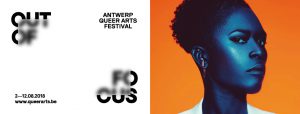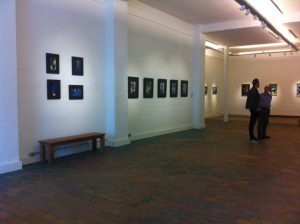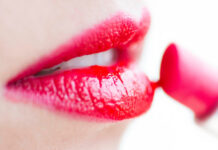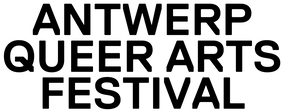Questioning gender and sexual diversity
Het Roze Huis-çavaria Antwerpen nodigt u uit op de openingsavond van het Antwerp Queer Arts Festival
Het Roze Huis-çavaria Antwerpen invites you to the opening night of the Antwerp Queer Arts Festival
Donderdag 2 augustus om 20:00, Galerie Verbeeck-Van Dyck, Verbindingsdok-Westkaai 12, te Antwerpen (2000)

Met beeldend werk van Leah Devun, Pierre Liebaert, Joeri Vanhamel, Conny Karlsson Lundgren, Nabil Vega en Hannah Dawn Henderson.
Galerie Verbeeck-Van Dyck opende op 12.12.12 een nieuwe galerie in Antwerpen, aan het Eilandje, vlakbij het stedelijk museum MAS.
Het gerenoveerde pand dateert van het einde van de 19e eeuw en de gelijkvloerse ruimte van ca. 220 m² biedt aan kunstenaars en kunstliefhebbers de ideale ruimte voor een kunstbeleving. De strategische locatie op het herrezen Eilandje is geen toeval.
Paul Verbeeck, sinds de jaren 1980 promotor van de Wolstraat in Antwerpen als centrum voor hedendaagse kunstruimten, ziet een nieuwe uitdaging in het promoten van jong talent.
Vanuit een groot gevoel voor de kunstgeschiedenis plaatst Verbeeck hedendaags talent naast vaste waarden die via Verbeeck Van Dyck de aandacht zullen krijgen die ze verdienen.
Lokaal talent krijgt de kans om naast internationale kunstenaars, zoals fotograaf Roberto Salas (°1940), te exposeren. Tevens houdt Galerie Verbeeck-Van Dyck eraan om jonge kunstenaars op weg te helpen door middel van publicaties en ondersteuning van tentoonstellingen in binnen- en buitenland.
Anne Van Dyck, echtgenote van Paul Verbeeck, treedt met de nieuwe galerie naar buiten als partner in Verbeecks nieuwe avontuur. Een eerbetoon aan hun lange en mooie relatie, waarin kunst een centrale plaats inneemt. De galerie zal naast haar vaste kunstenaars ook de nodige aandacht en accenten leggen op cross disciplinaire projecten. Open minded, tout court.
De galerieruimte biedt een uitgelezen kans voor verzamelaars, kunstenaars, academici en kunstliefhebbers om elkaar te vinden en te inspireren.

Thursday, August 2, (expo), “Out of Focus”, Opening on August 2 at 20:00.
Expo will be on view during the entire festival, daily from 12:00—17:00, Gallery Verbeeck—Van Dyck, free tickets
The queer community has long existed out of focus from mainstream society. Whether pushed away to the margins or hiding in plain sight, visibility and representation have long been too absent for various facets of queer. In this year’s exhibition, organized in Gallery Verbeeck-Van Dyck, the Antwerp Queer Arts Festival explores notions of (in)visibility, hiding and uncovering that are a substantial part of everyday queer life.
In the presented works, visibility is positioned between a basic human necessity with which to find agency, and a potential hazard. Some works in their own right serve as a vehicle to make visible often underrepresented components of the queer community. By programming a range of artists from different geographical areas and places within the queer community, the Antwerp Queer Arts Festival aims to contemplate the positive and potentially negative consequences of visibility and being in focus.
Including works by Conny Karlsson Lundgren, Leah DeVun, Nabil Vega, Pierre Liebaert & Hannah Dawn Henderson.
Leah DeVun is an artist and historian living in Brooklyn, New York. Her work has received coverage in publications such as Artforum, Huffington Post, People Magazine,
Hyperallergic, Art Papers, Feature Shoot, Redbook, Slate, Capricious, LA Weekly, Feministing.com, Gallerist, NYMag.com, Buzzfeed, Forbes, .… She is currently an associate professor at Rutgers University, where she teaches women’s and gender history. The works being shown are from the multi-disciplinary projectLesbian Land, centered around queer and feminist space. This series draws its title from Lesbian Land, a collection of writings by lesbians who founded or lived in women’s intentional communities, sometimes called “womyn’s lands”, in the 1970s and 1980s. The project was originally installed at Women & their Work Gallery in Austin, Texas. Taking the history of the gallery as a jumping off point to ask viewers to consider the nature of queer and feminist space in the past and present. The gallery was founded in the 1970s by a feminist collective, including lesbian artists, who wanted to create a space for women and people of color who had been excluded from mainstream white- and male-dominated arts venues. While spaces and publications dedicated to feminist activism and artwork were all the rage in the 1970s, fewer survive now. This project asks: what did a feminist collective space look like three or four decades ago? What does one look like now?
This project also considers how individuals have historically worked to create non-traditional living spaces (through intentional communities, collectives, land trusts, and other methods of pooling resources to buy land or buildings) that exist, at least ideally, outside of a market economy. At a time when conversations about gentrification, real estate development, and sustainable communities are omnipresent, this set of images and conversations asks us to look at the past to imagine a different future.
Pierre Liebaert is a Belgian photographer currently based in Brussels, Belgium. He graduated from l’Ecole Supérieure des Arts de l’image “Le 75” in Brussels. His series, “Macquenoise”, was published by the Belgian editor Le caillou bleu. Very often immersive, his projects are often long-term and devour him. Although they are mainly photographic, his new series “Libre maintenant” builds itself around an installation composed of a film, images, music, audio recordings and texts.
Pierre Liebaert invites us to a strange in-camera. The models who replied to his ad wanted to pose in the intimacy of closed doors, as if this face to face with the photographer whom they knew nothing about was the one thing they had been waiting for.
No other desire than to be in front of him, to be contemplated, exposing themselves before the camera and transgressing a norm their public life or private situation seem to impose on them. By posing nude and masked, revealing imperfect bodies at odds with the standards of erotic photography, these men had nothing else in mind but to abandon themselves to the gaze of the other, to submit themselves to it. The resulting photograph is for them but a document bearing witness to this, a “photograph as proof”, an image of their momentary freedom.
This burlesque confessional produced photographs permeated with great solitude; a sad carnival of naked bodies reminding of recumbent statues, the mask protecting them from themselves.
Opting for the gaze of the photographer rather than the psychologist’s couch, they leave light hearted, having unburdened their secret onto the one who will remain its sole depositary.
Pierre Liebaert rediscovered the essence of photography, of the relationship between model and photographer, exacerbating the notion of power it infers in this desired submission.
(Xavier Canonne, director of the Photography Museum in Charleroi, Belgium)
Nabil Vega is a Chicago-based Bengali artist working with new media, photography, socially engaged art and performance. Their most notable projects include “Visiting Thahab” (ongoing), a rich exploration of the contemporary presence and experience of the Muslim femme. Vega creates immersive works that examine elements of our lived experiences as they intersect with identity, personal politics, and queerness. Since 2014 they have been organizing and curating performance and new media works in collaboration with organizations and artist run platforms such as MIX NYC and their own platform VIX: Virtual International Exchange. Vega is recipient of the prestigious Traveling Fellowship (2018) and Springborn Fellowship (2011) from the School of theMuseum of Fine Arts, Boston. Their works have been exhibited nationally and internationally in museums, festivals and galleries; including a solo exhibition at theNew Bedford Museum of Art (2018) and featured in publications such asEmergency Index Vol. 6, The Boston Globe, The Washington Post & The Aerogram.
Conny Karlsson Lundgren is a Swedish artist working with film, text and image to uncover both private and political narratives. In his practice he focuses on the workings of language and alternative readings of history, while nurturing a fascination for the ephemeral, seemingly temporary traces and moments that together form a larger context.
Karlsson Lundgren is currently based in Malmö. He holds an MFA in Fine Arts fromValand Academy in Gothenburg SE. 2014—2015 he was enrolled at the Van Eyck Post Academic Program in Maastricht NL. Recently he exhibited in the Moderna Museet (Malmö), Extra City Kunsthal(Antwerp), Kunsthall Nikolaj (Copenhagen) and had a solo exhibition at Haninge Konsthall (Stockholm).





















